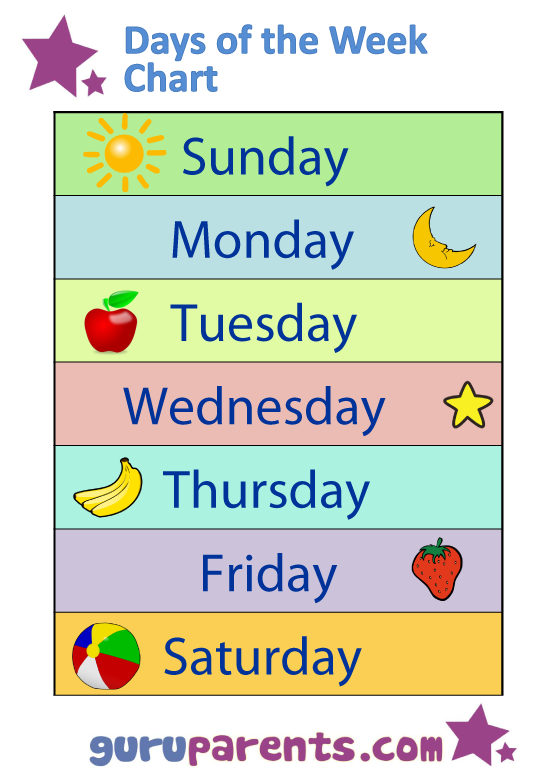The concept of time can be difficult for young children to understand. It is even harder trying to explain that you don’t get another birthday until ‘next year’ or for those that celebrate Christmas, Santa isn’t coming until December!
One of the first steps in teaching the concept of time is days of the week. Referring to days by the number of night-time sleeps can make it easier for children to understand, as this is familiar to them already.
Our Days of the Week Chart is brightly colored and ideal to have on a wall or visible for your child to see every day of the week!
Free, printable Days of the Week Chart
Check out our Days of the Week Worksheets for more practice for learning the days of the week!
Days of the Week Chart Quick Tips
1. Start by reciting the days in order. The days of the week have a melodical flow – almost song-like, which can help children remember.
2. Differentiate the 2 days of the weekend from the 5 weekdays. You could mention that Saturday and Sunday (the ‘S’ days) are the days that we don’t go to school, or that Mum or Dad stay home from work, or days we get to sleep in and so on. Choose anything that is relevant to your child’s lifestyle.
3. If your child is ready, you might like to sound out the words. Once they recognize the word ‘day’, they will only have to sound out the first half of each word. Wednesday is the only really tricky one!
4. You might find it easier to explain ‘yesterday’, ‘today’ and ‘tomorrow’ if you have a calendar handy. You can cross off each day and look forward to events of the calendar like birthdays, outings and holidays.
Quick Facts – Meanings of the Days of the Week
The names given to the days of the week have been derived from Roman and Germanic cultures.
Sunday, Monday and Saturday have kept their Roman names while Tuesday, Wednesday, Thursday and Friday had their Roman names replaced with Germanic equivalents.

